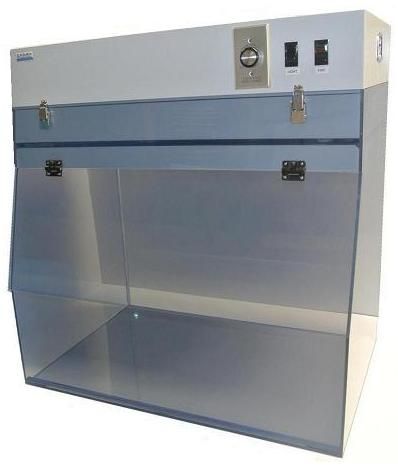A laminar flow hood, also known as a clean bench, is a critical piece of equipment in laboratory settings that provides a controlled, particle-free environment for various applications. To ensure its optimal performance and longevity, regular maintenance and proper cleaning practices are essential. Global Lab Supply recognizes the importance of maintaining and cleaning laminar flow hoods and offers expert insights to help you achieve optimal performance and extend the lifespan of your equipment. In this comprehensive guide, we will explore the key steps and best practices for maintaining and cleaning your laminar flow hood, ensuring a clean and contamination-free workspace.
Regular Inspection and Maintenance
Regular inspection is crucial to identify any signs of wear, damage, or malfunctioning components in your laminar flow hood. Establish a maintenance schedule and perform routine checks to ensure that the hood is in proper working condition. Some key areas to inspect include:
Filters: Check the condition of the HEPA (High-Efficiency Particulate Air) filters regularly. Look for signs of damage or blockage. Replace the filters according to the manufacturer’s recommendations or when the airflow starts to diminish.
Lighting: Verify that the lighting inside the hood is functioning properly. Replace any burnt-out bulbs promptly.
Seals and Gaskets: Inspect the seals and gaskets around the hood to ensure a tight seal. Replace any damaged or deteriorated seals to maintain the integrity of the airflow.
Airflow Uniformity: Monitor the airflow patterns inside the hood to ensure uniformity. Uneven airflow may indicate blockages or obstructions that need attention.
Electrical Components: Check the electrical connections and components, such as switches and fans, to ensure they are functioning correctly. Replace or repair any faulty components as needed.
Cleaning the Work Surface
The work surface of the laminar flow hood should be kept clean and free from debris or contaminants. Follow these steps for cleaning the work surface:
Clear the Workspace: Remove all items and equipment from the work surface before cleaning.
Use a Mild Cleaning Solution: Prepare a solution of mild detergent or disinfectant recommended for use in cleanroom environments. Avoid using harsh chemicals or abrasive cleaners that could damage the surface.
Wipe Down the Surface: Dampen a clean, lint-free cloth or sponge with the cleaning solution and gently wipe down the work surface, removing any residue or spills. Pay attention to corners, edges, and seams where contaminants may accumulate.
Rinse and Dry: After cleaning, rinse the surface with clean water to remove any remaining cleaning solution. Dry the surface thoroughly using a clean, lint-free cloth to prevent the growth of mold or bacteria.
Cleaning the Interior
Maintaining a clean interior of the laminar flow hood is essential to prevent the accumulation of contaminants and ensure the effectiveness of the airflow. Follow these steps to clean the interior:
Turn Off the Hood: Before cleaning the interior, ensure that the hood is turned off and unplugged from the power source.
Remove Loose Debris: Using a soft brush or vacuum cleaner with a HEPA filter, remove any loose debris or particles from the interior surfaces of the hood.
Clean the Walls and Surfaces: Prepare a mild cleaning solution as mentioned earlier and dampen a clean cloth or sponge. Gently wipe down the interior walls, ceiling, and other surfaces of the hood. Pay attention to corners and hard-to-reach areas.
Clean the Air Grilles: Clean the air grilles or diffusers with a soft brush or vacuum cleaner to remove any dust or debris that may obstruct the airflow.
Rinse and Dry: After cleaning, rinse the surfaces with clean water to remove any residue from the cleaning solution. Use a clean, lint-free cloth to dry the interior thoroughly.
Filter Replacement
The HEPA filters in a laminar flow hood play a crucial role in maintaining a clean environment. Over time, these filters become clogged with particles and lose their efficiency. Follow these guidelines for filter replacement:
Follow Manufacturer’s Recommendations: Refer to the manufacturer’s guidelines for the recommended filter replacement schedule. It is typically recommended to replace the filters at least once a year or when the airflow velocity drops below the specified level.
Turn Off the Hood: Before replacing the filters, turn off the hood and unplug it from the power source.
Follow Safety Precautions: When handling used filters, follow proper safety precautions to prevent exposure to contaminants. Wear appropriate personal protective equipment, such as gloves and a mask.
Remove and Dispose of Used Filters: Carefully remove the used filters from the hood and dispose of them according to local regulations or manufacturer’s recommendations.
Install New Filters: Install the new filters according to the manufacturer’s instructions. Ensure that they are properly seated and secured in place.
Calibration and Certification
Periodic calibration and certification of your laminar flow hood are essential to ensure its accurate performance and compliance with industry standards. Consult with a qualified service provider to perform regular calibration and certification to verify the airflow velocity, containment, and other critical parameters of the hood.
Conclusion
Maintaining and cleaning your laminar flow hood is vital for its optimal performance and to create a contamination-free workspace. By following the steps and best practices outlined in this guide, you can extend the lifespan of your equipment and ensure a clean environment for your laboratory applications. Global Lab Supply understands the importance of proper maintenance and offers a range of high-quality laminar flow hoods designed to meet the diverse needs of scientific laboratories. Trust Global Lab Supply for your laboratory equipment needs and achieve optimal performance from your laminar flow hood through regular maintenance and proper cleaning practices.

